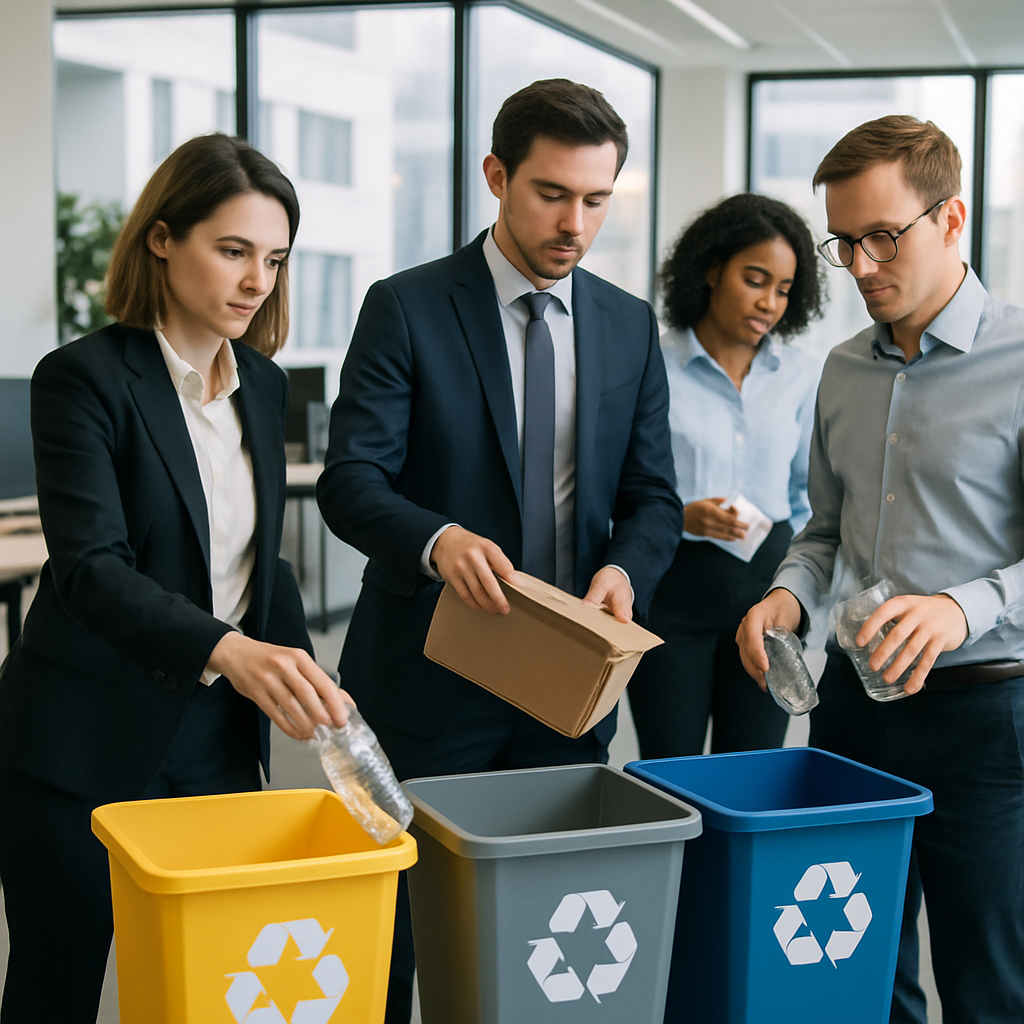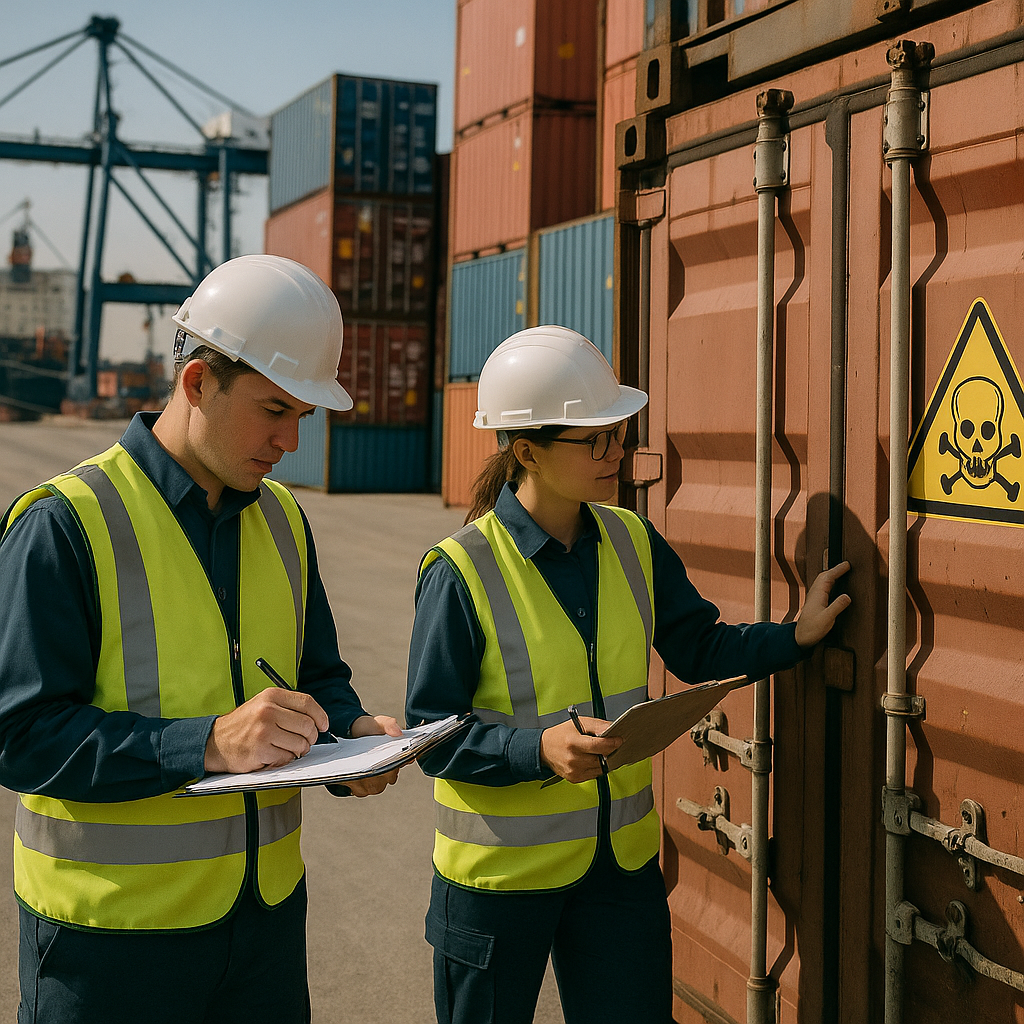5901 Botham Jean Blvd, Dallas, TX 75215
EPA’s Key Recycling Regulations: RCRA Guidelines and Facility Requirements
September 10, 2025Every day, businesses and individuals across America generate tons of waste. Some of this waste contains harmful chemicals that can damage the environment if not handled properly. The Environmental Protection Agency (EPA) oversees recycling in the United States through the Resource Conservation and Recovery Act (RCRA), a comprehensive framework designed to ensure waste is managed safely from creation to disposal.
RCRA is the cornerstone of America’s waste management strategy. Enacted in 1976, this legislation empowers the EPA to regulate hazardous waste throughout its entire lifecycle—a “cradle-to-grave” approach. The act balances two crucial goals: promoting recycling and resource conservation while ensuring proper handling of potentially dangerous materials.
The regulations particularly focus on hazardous waste recycling, which requires special attention due to its potential environmental and health impacts. Through RCRA, the EPA establishes clear guidelines for identifying hazardous materials, managing them safely, and ensuring facilities handling these materials meet strict standards.
How Does the EPA Define Recyclable Materials?

The EPA’s definition of recyclable materials depends on a critical distinction: whether materials can be excluded from solid waste regulations when recycled. This classification is integral to the Resource Conservation and Recovery Act (RCRA) framework governing waste management in the United States.
Recyclable materials are categorized according to their hazard level and recycling method. To be recycled instead of regulated as waste, a material must pass the EPA’s legitimacy test, ensuring that recycling is genuine and not a means to circumvent proper waste management requirements.
Materials Excluded from Solid Waste Definition
The EPA excludes certain materials from being classified as solid waste when recycled appropriately. These exclusions promote sustainable recycling practices while maintaining environmental protection. Key examples include:
Scrap metal is one of the most common exclusions. When processed scrap metal, unprocessed home scrap, or prompt scrap metal is recycled, it is not classified as solid waste. This has helped drive a robust metal recycling industry nationwide.
Spent materials from mineral processing industries also receive exclusions when properly managed. These materials can be reclaimed for minerals, acids, water, or other valuable components without triggering hazardous waste regulations.
Certain petroleum industry by-products like oil-bearing hazardous secondary materials can be excluded when reinserted into the petroleum refining process. Similarly, spent caustic solutions from petroleum refining liquid treating processes used to produce cresylic or naphthenic acid avoid waste classification.
Legitimate Recycling Criteria
The EPA strictly distinguishes genuine recycling from “sham recycling” through four key legitimacy criteria:
First, hazardous secondary material must contribute usefully to the recycling process or product. The material must provide valuable ingredients, replace a catalyst or carrier, or recover valuable components.
Second, the recycling process must produce a valuable product or intermediate. This product must be sold to a third party or used by the generator or recycler as an effective substitute for a commercial product.
Third, the generator and recycler must manage the hazardous secondary material as a valuable commodity. Storage and handling should minimize loss, as with analogous raw materials.
Fourth, the product of recycling must compare to legitimate products in terms of hazardous constituent levels. It should not contain significantly more hazardous components than similar products made from virgin materials.
Alternative Regulatory Standards
Some materials remain classified as solid wastes but benefit from reduced regulatory requirements when recycled. Universal wastes—including batteries, pesticides, mercury-containing equipment, lamps, and aerosol cans—follow streamlined collection and recycling rules.
Used oil has its own specialized recycling regulations separate from standard hazardous waste procedures. These alternatives make recycling more practical while maintaining environmental safeguards.
Materials used in a manner constituting disposal must undergo a chemical reaction making them inseparable by physical means, meeting land disposal restriction treatment standards before application.
Precious metals reclamation enjoys reduced requirements because these valuable materials are handled protectively due to their economic value. This includes gold, silver, platinum, palladium, and other precious metals recovered from hazardous waste.
| Material | Exclusion or Regulation | Description |
|---|---|---|
| Industrial Ethyl Alcohol | Excluded | Reclaimed ethyl alcohol is not regulated when recycled, subject to specific conditions. |
| Scrap Metal | Excluded | Scrap metal not excluded under certain CFR sections is not regulated when recycled. |
| Pulping Liquors | Excluded | Pulping liquors reclaimed and reused in the pulping process are excluded unless speculatively accumulated. |
| Shredded Circuit Boards | Excluded | Provided they are stored correctly and free of hazardous components before recovery. |
| Condensates from Kraft Mill Steam Strippers | Excluded | The exemption applies if used in compliance with specific CFR requirements. |
| Spent Caustic Solutions from Petroleum Refining | Excluded | Used as feedstock to produce cresylic or naphthenic acid, given no speculative accumulation. |
| Used Oil | Regulated with Alternatives | Treated under specialized recycling rules separate from standard hazardous waste procedures. |
| Precious Metals from Waste | Regulated with Alternatives | Handled with reduced requirements due to their intrinsic economic value. |
The distinction between excluded and regulated recyclables often depends on how the material is managed and its potential environmental impact. Some materials, like shredded circuit boards, qualify for exclusion only when free of mercury switches and stored properly to prevent environmental release.
Spent lead-acid batteries represent another category with specialized handling. Those generating, transporting, or storing these batteries before reclamation face reduced requirements, while actual reclamation facilities must follow more comprehensive regulations.
Understanding these definitions and exclusions is crucial for businesses and municipalities seeking to maximize recycling while remaining compliant with environmental regulations. The EPA continually updates these classifications to balance recycling incentives with necessary environmental protections.
What are the Requirements for Recycling Facilities?

Recycling facilities that handle hazardous secondary materials must adhere to strict regulatory standards established by the Environmental Protection Agency (EPA). These requirements ensure proper management of potentially dangerous materials while protecting human health and the environment.
The Resource Conservation and Recovery Act (RCRA) provides the regulatory framework for these facilities. Depending on the specific materials handled and recycling activities performed, facilities may need to obtain EPA identification numbers and comply with comprehensive standards.
Containment Requirements
Proper containment is essential for recycling facilities handling hazardous materials. Facilities must use appropriate storage units such as containers, tanks, or containment buildings to prevent environmental releases. These units require regular inspection to maintain integrity.
Storage areas must include specific features:
- Double liner systems for surface impoundments and waste piles
- Leachate collection systems to capture any liquid passing through waste materials
- Leak detection systems for potential containment failures
- Secondary containment for tanks and containers
- Minimum 50-foot distance between ignitable/reactive materials and facility boundaries
Emergency Preparedness Standards
Facilities must maintain comprehensive emergency response capabilities, including:
- Written contingency plans detailing response procedures for potential emergencies
- Designated emergency coordinator available 24 hours per day
- Emergency equipment such as fire extinguishers, spill control materials, and communication devices
- Adequate aisle space for emergency access and evacuation
- Arrangements with local emergency services
- Employee training on proper emergency response procedures
Recordkeeping and Documentation
Thorough documentation is mandatory for recycling facilities. Records must be maintained for at least three years and include:
- Waste determination analyses to identify hazardous characteristics
- Manifests tracking waste shipments
- Inspection logs of storage areas and equipment
- Training records for facility personnel
- Contingency plan updates and revisions
- Treatment or recycling process documentation
Financial Assurance
Facilities must demonstrate financial capability to cover potential closure costs, environmental remediation, and liability. This ensures that funds are available to properly close the facility and address any environmental issues, even if the company faces financial difficulties.
Exemptions from Full RCRA Permitting
Some recycling facilities may qualify for exemptions from full RCRA permitting requirements. These exemptions typically apply to facilities that:
- Process hazardous secondary materials that are legitimately recycled and not speculatively accumulated
- Operate as generators recycling their own wastes on-site in certain circumstances
- Use specific types of recycling processes identified by regulations
- Comply with notification requirements and maintain documentation of their exempt status
Even exempt facilities must follow good management practices and may be subject to certain standards for containment, emergency preparedness, and environmental protection.
Compliance Monitoring
The EPA and authorized state agencies conduct regular inspections to verify compliance with requirements. These inspections may be announced or unannounced and typically involve:
- Review of facility records and documentation
- Visual inspection of storage areas and recycling operations
- Evaluation of containment systems and emergency equipment
- Verification of employee training
- Assessment of compliance with permit conditions or exemption criteria
Facilities found in violation may face enforcement actions, including penalties, corrective action orders, or permit revocation.
Regular compliance with these requirements helps recycling facilities operate safely while making valuable contributions to material recovery and conservation. Facilities should stay current with regulatory updates as standards may change over time.
How are Hazardous Waste Exports Regulated?

The EPA enforces strict oversight of hazardous waste exports to protect health and the environment both domestically and globally. Its regulatory framework mandates responsible management of hazardous waste across international borders.
Core Export Requirements
Hazardous waste exporters must adhere to a structured process before waste can leave the United States. This includes several critical steps:
First, exporters must obtain an EPA Identification Number, a mandatory unique identifier for any entity exporting hazardous waste, whether they are generators, transporters, or recognized traders.
Before shipment, exporters must establish legally binding contracts with the foreign receiving facility. These contracts must outline responsibilities for proper waste management and specify contingency plans if disposal or recycling becomes impossible.
Crucially, exporters must submit a notification to the EPA at least 60 days before the intended shipment. This notification must detail the waste, proposed shipment dates, transportation routes, and receiving facilities. The EPA forwards this information to the importing and transit countries for their review.
Exports cannot proceed until the EPA issues an Acknowledgment of Consent (AOC), confirming that all involved countries have approved the shipment. The AOC must accompany the waste during transport.
Documentation and Tracking
Regulatory requirements continue during and after transport. Exporters must:
- Submit Electronic Export Information (EEI) through the Automated Export System
- Prepare a RCRA hazardous waste manifest with specific export information
- Ensure an international movement document accompanies the waste
- Obtain confirmation of receipt from the foreign facility
- File exception reports if shipments are delayed, lost, or returned
- Submit annual reports to the EPA summarizing all export activities
Beginning December 1, 2025, exporters must submit export manifests to the EPA’s electronic manifest system, enhancing tracking capabilities.
OECD vs. Non-OECD Country Requirements
The requirements for hazardous waste exports vary significantly based on whether the destination country is a member of the Organization for Economic Cooperation and Development (OECD).
For OECD member countries, exports follow the framework established by the OECD Council Decision on transboundary movements of waste. This multilateral agreement facilitates waste trade between the 37 OECD member countries while ensuring environmental protection. Some OECD facilities may be “pre-consented” to receive certain waste streams, allowing for streamlined notification processes and approvals valid for up to three years.
In contrast, exports to non-OECD countries face more restrictions. The Basel Convention, governing international waste shipments, prohibits Parties from trading Basel-controlled wastes with non-Parties like the United States without separate bilateral agreements. Consequently, U.S. exports to many non-OECD countries are limited or prohibited entirely.
The United States maintains bilateral agreements with several countries, including Canada and Mexico, establishing specific procedures for transboundary waste shipments. These agreements may modify standard notification requirements or establish country-specific documentation.
Electronic Reporting Requirements
The EPA has modernized the hazardous waste export process through its RCRAInfo Waste Import Export Tracking System (WIETS). Exporters must use this system to submit notifications, annual reports, and other required documentation electronically. This shift to electronic reporting enhances transparency and allows for more efficient tracking of international waste shipments.
Recordkeeping remains vital for compliance. Exporters must maintain records of notifications, consents, contracts, and confirmations for at least three years, making them readily available for inspection by EPA or state officials.
Through these comprehensive regulations, the EPA ensures that hazardous waste exports adhere to environmentally sound management practices and comply with both domestic and international requirements.
Future Trends in EPA Recycling Regulations

The EPA continues to refine its recycling regulations to address emerging environmental challenges. In 2024, the agency has focused on strengthening standards for electronic waste recycling. New frameworks for Extended Producer Responsibility (EPR) are gaining momentum at both federal and state levels. These regulations shift waste management responsibility from consumers to manufacturers, incentivizing companies to design products with durability and recyclability in mind.
Pharmaceutical waste management is another critical area of regulatory development. The EPA has been working to establish clearer guidelines for proper disposal methods that prevent medication from contaminating water supplies. In addition, the agency is investing in infrastructure through its Solid Waste Infrastructure for Recycling (SWIFR) program to boost domestic recycling capacity and reduce dependence on international markets.
As recycling regulations evolve, it’s essential for municipalities, businesses, and recycling professionals to stay informed about compliance requirements and emerging opportunities. For those seeking to navigate these changes effectively, contact Okon Recycling at 214-717-4083 for expert guidance on sustainable waste management solutions.
